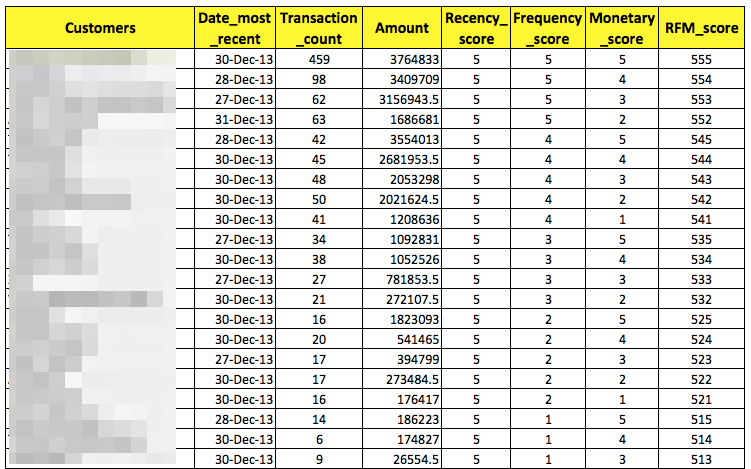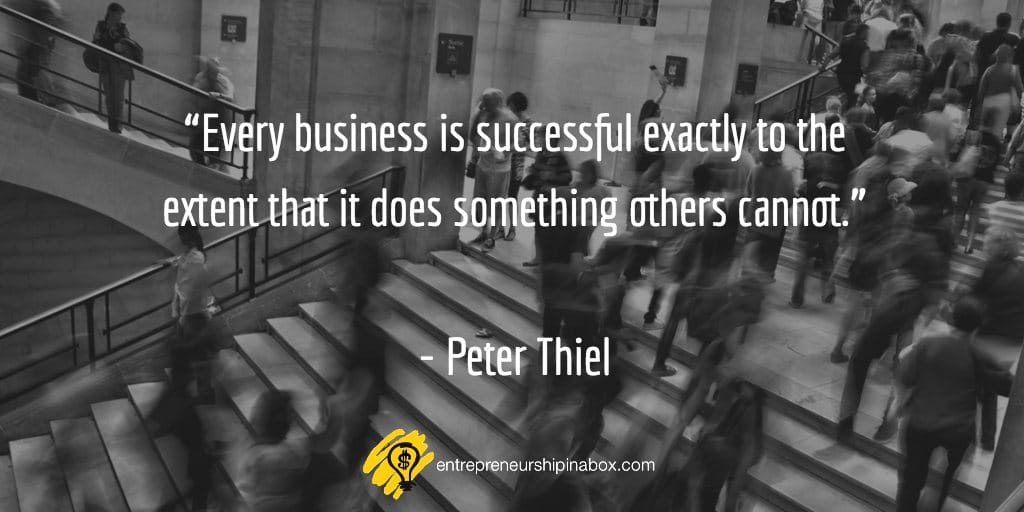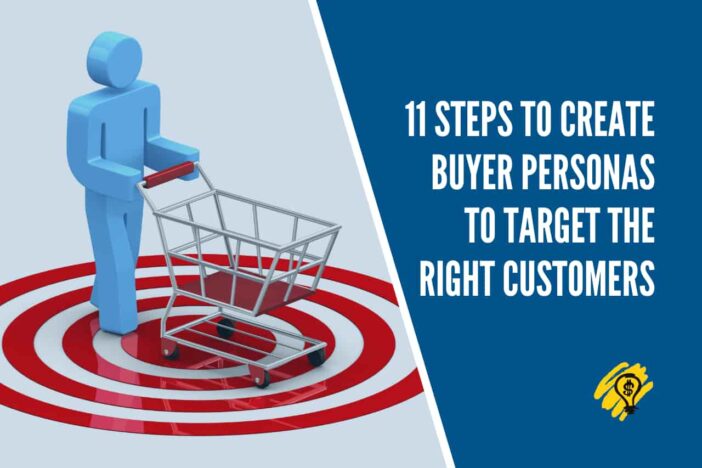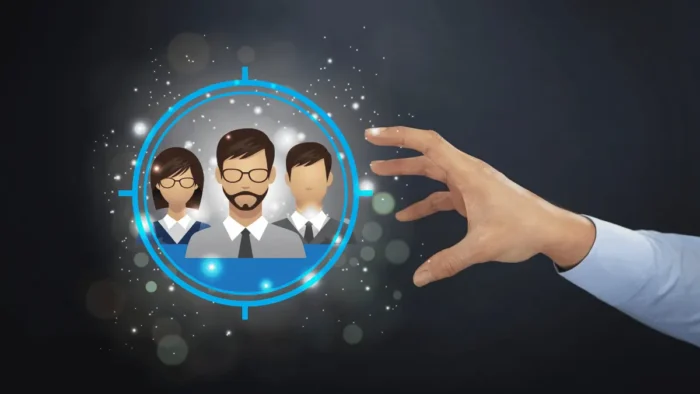A buyer personas are your customer’s ID card for your business with a really large potential to help in running the business. It is important to gain fresh and strong knowledge about your customers.
As an entrepreneur and your small business, communicate with the current and potential customers on an everyday level. You need to listen to them. You need to be there for them when they need your help. Also, you need to be in continuous interaction with them.
Many entrepreneurs tell me that it is not possible. Yes, it is not possible, but only if you do not have a systematic or strategic approach when you are doing these things. If you want to be a more systematic and strategic entrepreneur when interacting with current or potential customers, you need to use buyer personas.
In this post, I want to cover a simple but powerful process that can help you create your buyer personas.
Let’s start now.
What are Buyer Personas?
You’ve read about buyer personas. But what is a buyer persona?
The basic idea behind a persona is to paint a picture of who your customers are and what they’re like.
A buyer persona is a marketing term that refers to a fictional customer profile created by market researchers. Using this tool, you can identify your target audience and understand what kind of customers would be interested in your product or service. Think of buyer personas as virtual humans with distinct needs and wants. It helps you think about your customers in terms of specific attributes, behaviors, and problems, rather than simply classifying them as your typical demographic group.
Marketers create these profiles to answer the question: What will our target audience need to purchase our product or service?
How to Create Buyer Personas to Target Right Customers?
It’s essential to target your marketing message to your ideal customer. While you don’t need to understand every customer, you need to understand enough of them to know the problems they face and the challenges they face when making a purchase.
You can do this through buyer persona analysis, which creates your ideal customer profile based on your knowledge of their pain points, values, attitudes, fears, and expectations. By doing so, you can develop a detailed profile of your ideal customers’ needs and their issues. You can then begin tailoring your content and messages to address those issues, ultimately creating more relevant content and marketing messages.
Creating buyer personas is a vital part of the customer journey. So, here is a step-by-step framework for creating buyer personas.
Related: How To Reach Your Target Audience and Sell Your Product
1. You need to start by identifying your MVP customers
Who are your MVP (Most Valuable Persons) customers or buyers for your company? They are your ideal customers. Someone with the biggest likelihood that will buy something from you. Or someone with problems your business solves, someone who will like what you are doing, and someone with the needs really close to you.
To grow your business, you have to attract more customers. However, it’s not easy to find your most valuable customers. It takes time, effort, and research to find them. One way to attract them is to ask yourself some questions:
- Who are my most valuable customers?
- How would I describe them?
- What are their problems?
- What are their needs?
- Also, what do they care about?
- What do they like? Think about the things that you know about them.
- How can you use this information to help them?
- How can you be useful to them?
✋ Warning
You can use ABC analysis and RFM analysis to identify the most valuable persons (MVPs) for your small business.

2. You need to give your buyers a name
Many people think that this is not important, but it is. You incorporate more personality in your future activities by giving your buyer personas real names. For example, Anna, from 18 to 35 years old, desperately needs a make-up artist to be available for her when she wants to go out.
The sentence above is an example of how you can put some personality into your buyer personas. Personality is very important when you are writing your future activities. Your buyer personas should sound like real people.
Because of that, it is more likely that you will be forced to be more personal when you develop your future processes related to the customers.
3. Research their background and demographics
Now is the right time to spend some effort on a little research.
What type of personal or professional background do they have? What are your buyer personas’ age, gender, education, or other demographic characteristics? These are essential questions for you and the future of your business. Try to get as much as possible data and analyze them to have a clear view of who they really are.
In the modern world, people usually get information about the people they want to buy from the internet. To start with, you should learn as much as you can about your clients or potential customers. You can find all this information by going to Google, Facebook, LinkedIn, and Instagram. From there, you can find information about their education and profession. You can also get to know their hobbies and interests. Knowing these details will help you present better products and services to your clients.
4. Discover their goals, needs, and wants
All of us have some goals, needs, and wants. But, what about your prospective buyers? What are their goals? What are their needs and wants? If you know the answers to these questions, it will be much easier for you to come close to your prospective buyers and succeed in your efforts to sell your products and services.
Your job is to figure out what you can do to help them meet their needs and wants.
There are many ways that you can do this. One of the first things you should do is find out what they think they need and want. You can do this by talking with them or by asking them.
Another way to do this is by using surveys or questionnaires designed to help you find out the answers to these questions. You can also ask them what problems they are facing right now. This will help you to know what their needs and wants are.
Finally, you can use a free service like Google Analytics. This can give you information about your visitors. It will also help you to know what your potential buyers want.
5. Discover how they currently achieve their goals and satisfy their needs and wants

When you already know their goals, needs, and wants, you will need to discover how they currently achieve those goals and satisfy their needs and wants. Keep in mind that you don’t want only to discover this, but you want to see where you, your company, and your products and services can be helpful for them in achieving their goals and satisfying their needs.
This means you need to find out about the resources, knowledge, skills, and abilities they currently have and use to achieve their goals. You should understand that when you help them, you will need to think about these factors to help them better. You should ensure that you’re not wasting your time on the wrong people.
6. Discover their biggest current concerns related to their goals, needs, and wants
What are their biggest concerns about their goals, needs, and wants? You want to help them remove these concerns, which is why you need the right answer to this question.
People usually worry about a lot of things in life. They are afraid of getting sick, losing their job, or getting divorced. They worry about their health, finances, friends, and so on. You can find solutions to their problems if you learn more about them. You should be able to help them remove these worries and concerns if you know more about them.
✋ Warning
If you want more customers, here are six things your customers want to hear from you.
7. Analyze their closer and the broader environment
Who are around your customers, and how can they impact their buying decisions? Are their friends can influence their buying decisions? Or are there some members of their family? Maybe their bosses will affect their decisions? You will need to list all entities in a close and broader environment around your buyers and analyze their impact.
You need to find out about all of the people around your customer. Some people think that only a small percentage of people can impact their buying decisions. Actually, the truth is that almost everybody can affect their buying decisions. The reason is that most of your buyers are influenced by other people in their immediate environment.
For example, a person may shop with their husband/wife or children. Sometimes, they can also influence their buying decisions when they go to their friends’ houses or workplaces. You should identify all those people and look at how they can affect your business.
8. Put everything that you have discovered through this process on one piece of paper
At this stage, you already have a large amount of knowledge about your buyers, and now you will simply need to put everything on a piece of paper in an organized order.
Make a spreadsheet with all the information about your clients. Then, use categories and headings to organize everything properly. You should put your information into different sections. For example, you can put your demographic information in one section, information about your product in another section, and information about your customers’ buying behaviors in the last section. You can put the sections into columns and rows. You can also include pictures in the spreadsheet to better illustrate your points.
9. Segment your buyer personas
When you look at the paper and the data you have collected and analyzed through this process, you can more easily see the difference between buyers. That difference will allow you to segment them and prepare your future actions according to this knowledge.
After you have finished collecting and analyzing all the data, you will be able to divide your customers into different groups. For example, you can market your services to one group of people while doing the exact opposite to another group of people.
There are several ways to classify people. You can either use their hobbies, their age, their gender, their professions, their lifestyles, etc. You can also use their geographical location. It is best to start with the basics to understand your customers better. Then, once you understand them, you can continue your research.
10. Visualize your buyer personas
You already have several types of buyer personas who are part of your ideal customers based on their different needs, wants, problems, desires, behavior, buying habits, etc. But, it is much easier for you and your team to have a visual picture of customers. In such a way, it will be easier to seed in your heads whenever you or your team members plan to make something for them.
So, try to make a visualization of these several most important buyer personas and share them with your team. Think about the most significant difference between them, and do not forget to include that difference in your visual presentation.
11. Create an ID card for each buyer’s persona
And the last step in this process that I will propose to you is to start documenting everything about your buyer personas. The best way to do this is to create something that I call an ID card for each buyer persona. First, you will decide what you will include as information in these documents.
One important thing that I want to mention here is that these ID cards aren’t something that you can create and forget. According to new data for your buyers, they need to become dynamic documents that you will change over time.
Conclusion
So, you can use these eleven steps processes to create something really important for your small business. What you will create in this process will be useful for your company’s future. Because of that, don’t lose your time. Start with the foundations for the future, and one of the foundations is exactly the right buyer personas.





